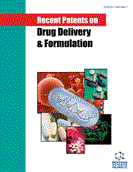Abstract
While cataract surgery is generally recognized as being one of the safest operations, there is still a significant complication rate. From 30 to 50% of all patients in the United States having cataract extraction develop opacification of the posterior lens capsule within two years and require laser treatment with its own significant risk of complications. Of the patients having cataract surgery, 0.8% develop retinal detachments, from 0.6% to 1.3% were rehospitalized for corneal edema or required corneal transplantation and about 0.1% presented with endophthalmitis . Thus, aside from secondary cataract, about 2% of 1.3 million people, or 26,000 individuals in the United States annually develop serious complications as a result of cataract surgery.
The aim of this investigation was to increase the safety and effectiveness of an individual intraocular lens (IOL) preventing an impairment in peroxide metabolism of the mature human cataractous lenses compared to normal lenses employing the specific nanotechnology coating which substitutes the inhibitory effect of the implantable device towards the active species of oxygen and the ability of IOL to regulate the H2O2 and lipid hydroperoxides levels in the surrounding medium. The implantation of IOLs with metabolic activity improves the capability of the surrounding ocular tissues to withstand oxidative stress induced in ocular humors by the photochemical and other metabolic reactions. The coated implantable medical device with thin film of platinum applied with magnetron sputtering, reacts as a body enzyme with deleterious peroxide compounds and free radical oxygen species in body fluids and tissue when said device is implanted into human body. The IOL having haptics coated with thin film of platinum, catalyzes the reduction of peroxide compounds to decrease their levels within the aqueous humor. Further, the coatings also scavenge toxic free radicals of oxygen, thus preventing cellular dysfunction resulting from oxidative attack. Coated IOLs according to the patented nanotechnology can address the vast majority of cataract surgery-induced complications, such as secondary cataract, intraocular inflammation (endophthalmitis) and foreign body reactions, cystoid macular oedema , corneal edema . The nanotechnology offers physicians and surgeons to develop and commercialize costeffective therapeutic medical implantable devices, products and support systems with metabolic activities for the treatment of ophthalmic diseases and of a wide range of pathological states and disorders which are treated by insertion of the implantable and prosthetic (polymeric) devices.Keywords: Aqueous humour, coated intraocular lens, corneal edema, cystoid macular oedema, endophthalmitis, magnetron sputtering, mature cataract, nobel metal, peroxide metabolism, peroxide metabolizing activity of the crystalline lens and coated intraocular lens, platinum, prevention of complications of cataract surgery, secondary cataract, therapeutic medical prosthetic devices
 32
32














